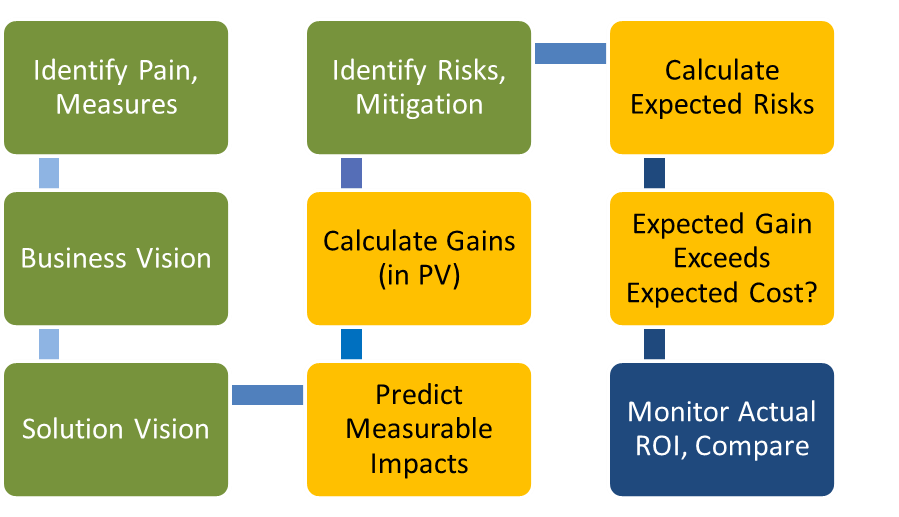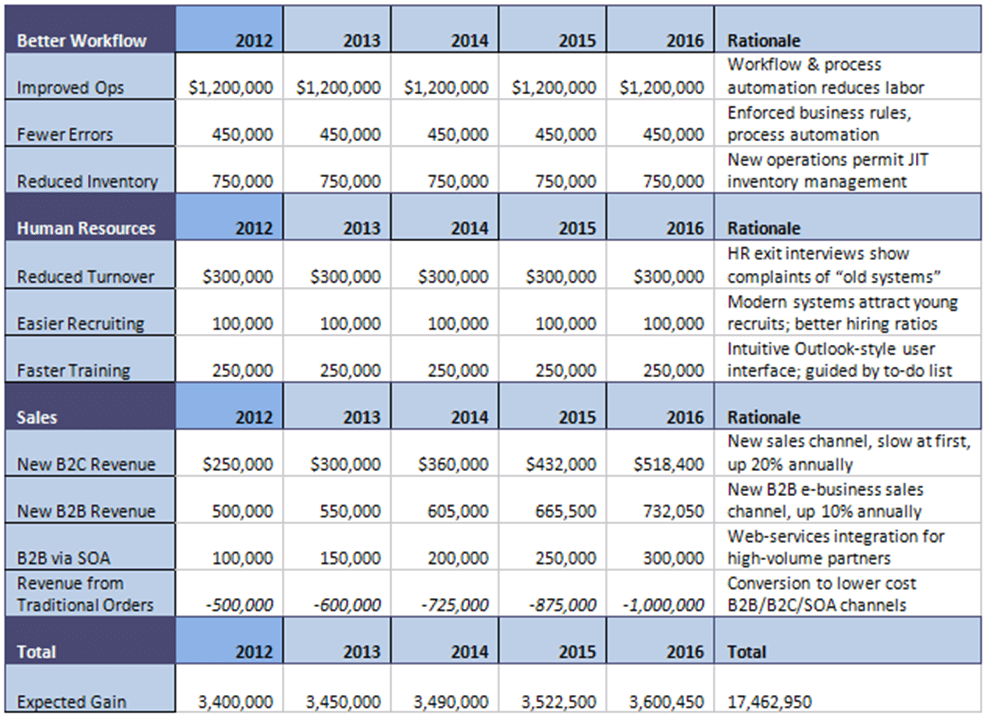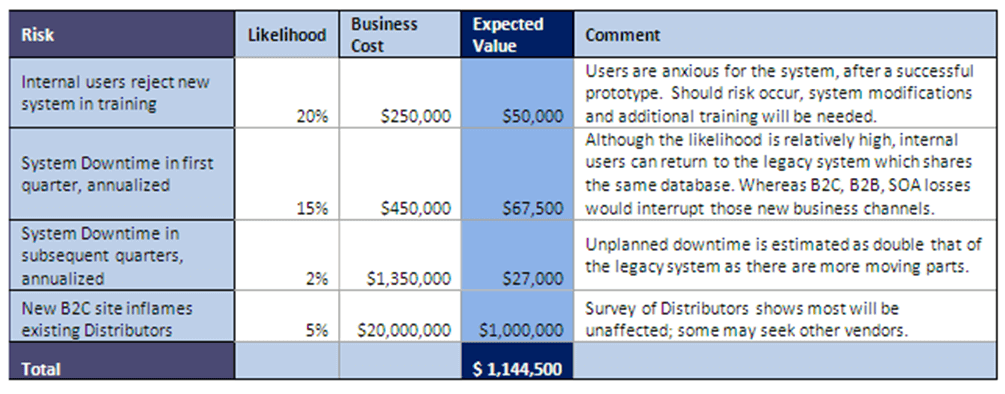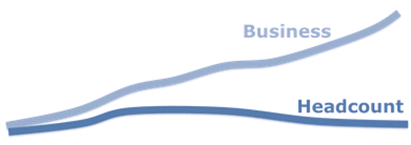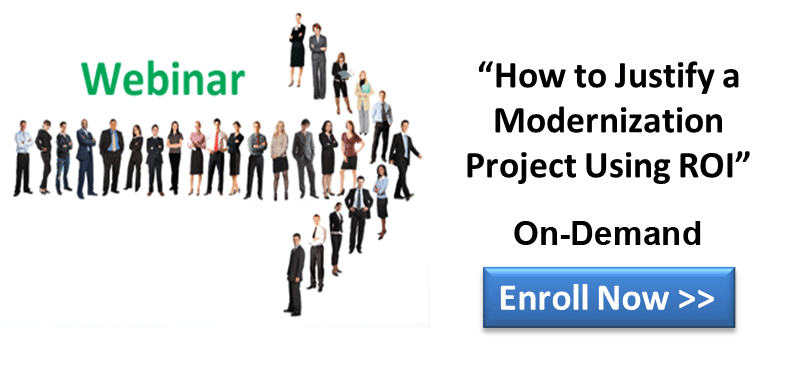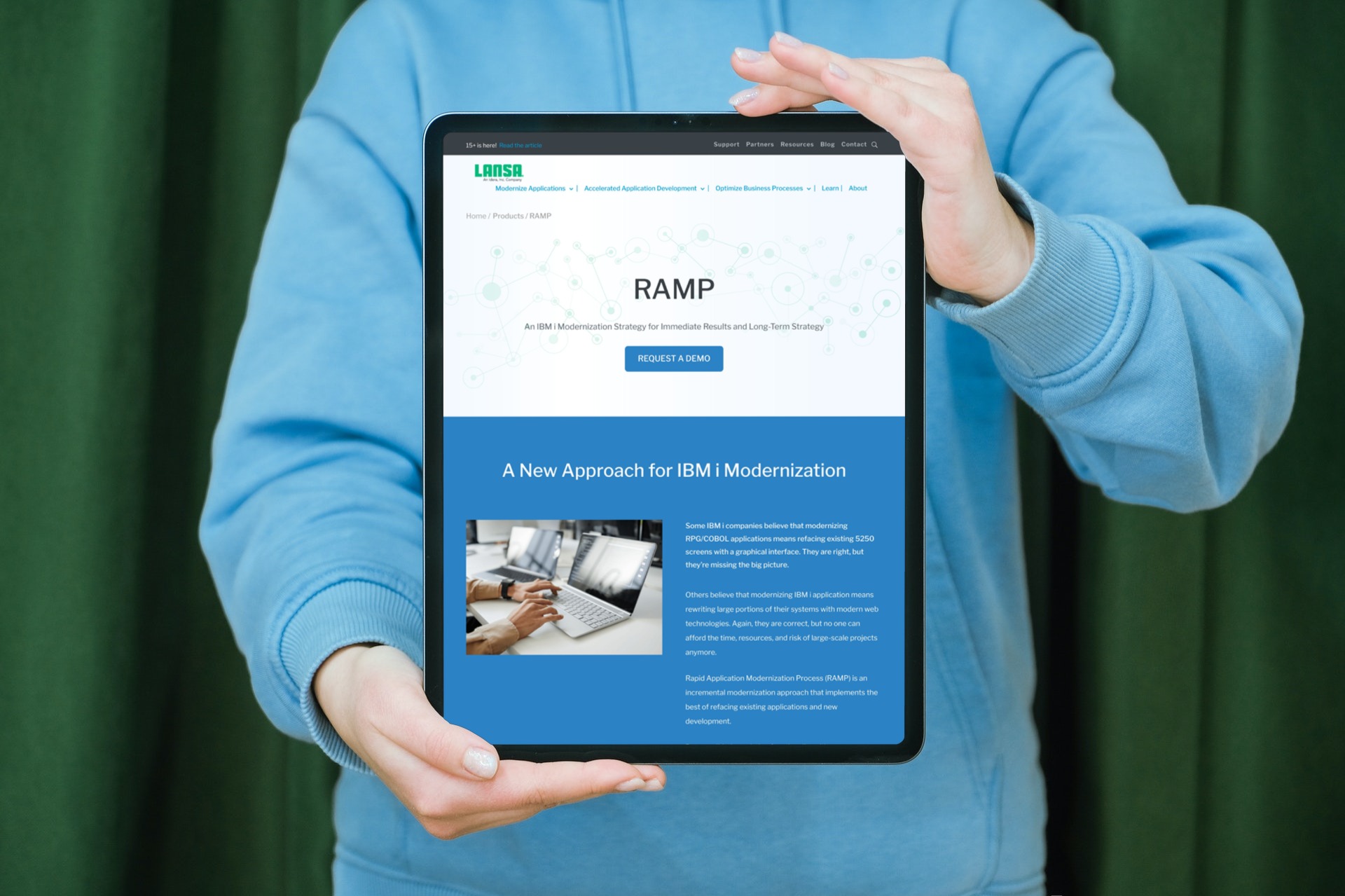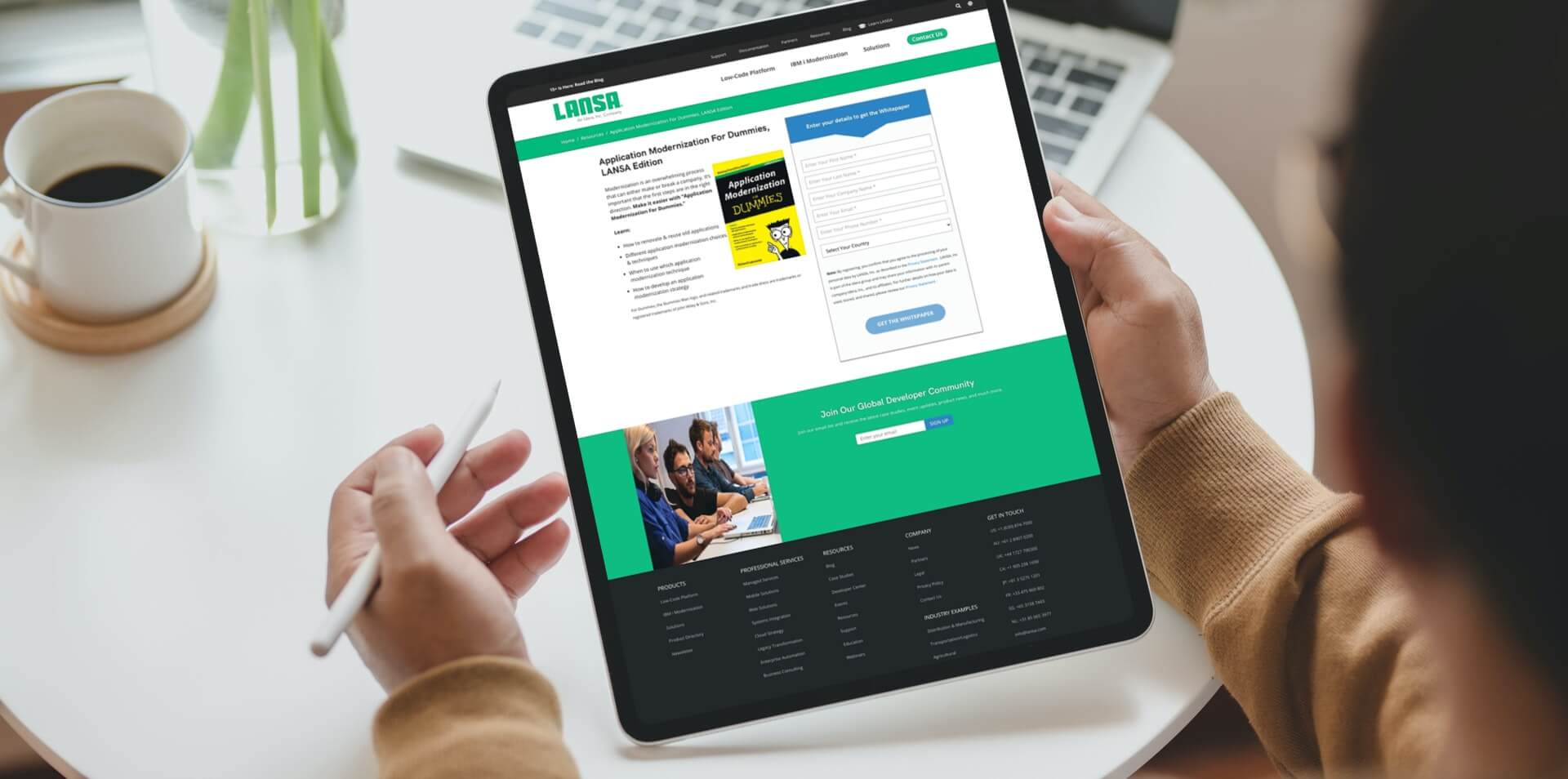This blog series unveils the steps needed to make an ROI-powered business case for Application Modernization to your CFO. Prior episodes outlined your current resources, your goals and the first 5 steps of the process, culminating in a Project Scope or Requirements Analysis.
Output from this Project Scope included:
- Business Vision Statement
- Non-functional Requirements
- Functional Requirements
- Design, which depending on the project may include a Data Model, User Interface, Workflow, etc.
- Report of all Project Risks, and how they will be addressed
- Prototypes, to address identified risk areas and draw out early feedback and support
- Project Plan, perhaps in MS Project format, with all known tasks, resources, dependencies, effort
- Project Management Methodology, including meetings, archives, time reporting, quality, etc.
However valuable this output is, it arguably pales in comparison to Step 6 – ROI Calculations.
Return on Investment, or ROI, is the ratio of money gained or lost on an investment relative to the amount invested. There are many different formulas to calculate the returns, such as the example below. But don’t worry, this isn’t a math lesson.
Let’s look at the big picture first.
The chart below provides context for the ROI-related steps in the process:
Of course, the Project Scope deliverables have already addressed the green blocks. The blue block will have to wait until after the project is completed and the dust has settled. For now, we’ll focus on the gold blocks.
 Predict Measurable Impacts
Predict Measurable Impacts
Although the Project Scope forced a deep dive into the requirements, design and planning, remember that it’s really all about creating business value. Here’s where you list all the business impacts that you expect your modernized system to have. Do your best to make them all measurable, ideally as dollar figures.
Here’s an example:
The numbers should come from the business owners, not from the IT team. They should be realistic. For example, note the expected reduction in revenue from traditional orders, as your new sales channels will be appealing to existing customers as well as new ones.
 Calculate Gains (in PV)
Calculate Gains (in PV)
Gains caused by the introduction of a modernized business application are expected to be realized in future months and years. However, capital costs for the project itself will be spent far sooner. To get them to make sense to your CFO, you might want to express them both in Present Value (PV) – the mathematics answer to the question: “What is it worth today?”
To calculate PV, you need to set an interest rate. For argument’s sake, let’s assume a 5% interest rate. In this case, the formula for Present Value is: PV = FV / 1.05n, where “FV” is Future Value and “n” is the number of years into the future. Isolating the ROI factor of “Easier Recruiting,” we calculate:
As you can see, this has the general effect of reducing your predicted gains, as gains achieved in the future are worth less than gains achieved today, thanks to the 5% annual interest.
Using a spreadsheet, it’s easy to extend the formulas and calculate the Present Value of all expected gains. In this case, the totals work out to:
 Calculate Expected Risks
Calculate Expected Risks
Just as your predicted gains should be based on expected values, you need to calculate the expected negative impacts for each risk.
You have a big head start on this, as you identified all risks in your Project Scope. Putting aside that you plan to bring risks forward through prototyping and model offices, let’s keep things simple. For each risk, you need to approximate two values:
- The % likelihood of the risk being realized
- The cost to the business should the risk be realized
Then, you multiply them together to get the Expected Loss of that risk factor.
For example, here is a table of risk factors that may be pertinent to this project:
Although we could predict risks for five years, for simplicity, let’s make believe that these risks are not applicable after year one.
 Expected Gain Exceeds Expected Cost?
Expected Gain Exceeds Expected Cost?
In the Project Scope, the Project Plan should list all the project costs. These should include costs for analysis, design, construction, quality and implementation. Costs for ongoing maintenance of the system should also be considered here – let’s assume $100,000/year in this example, starting in year two and remembering to use PV.
After all your hard work, this step is very simple, and hopefully very satisfying.
(ROI) = PV (Expected Gain) – PV (Expected Project Cost) – PV (Expected Value of Risk)
So, in the simple example, we see that the total ROI is $17,462,950 – $1,854,595 – $1,144,500.
That is, the expected ROI of the modernized system in Present Value is $14,463,855. Any expected ROI above zero is worth the consideration of your CFO, but this one is a no-brainer!
As a reminder, make sure you are not just whimsically tossing out numbers; each figure should be based on a realistic prediction achieved by surveying the business. Also, make sure that there is a mechanism in place to measure the actual impacts.
 Monitor Actual ROI, Compare
Monitor Actual ROI, Compare
As a Consultant, I like to stand up in the Project Scope presentation meetings and tell the executive team that they must hold me and themselves accountable to meet again 12 months after go-live to measure the actual ROI – and not just settle for a general feeling of the business impacts. A year goes by quickly, and most organization’s executives seem almost surprised when 10 months later I am asking to schedule the follow-up meeting.
Measuring the actual ROI and comparing it to the predictions will bolster your credibility and help your cause the next time you want money for a project.
So, track all the actual project costs, related changes in revenue, related changes in operational costs, risk factors and related losses suffered.
Survey the system users, their managers and other stakeholders for their general impressions of the project, the modernized system, how it has impacted their roles and how they believe it has impacted their business. Ideally, run the survey twice, maybe five months after go-live, and again at 10 months. Use different but equivalent question sets, and consider keeping the first survey anonymous to coax out the truth from those that may feel a conflict of interest otherwise.
Knowing that the “day of reckoning” with the executives is coming, I find that everyone involved feels the pressure to do their part. To galvanize this feeling, I like to build the skeleton presentation before any of the business impacts can even be measured, and show it to managers and key users. I include their names in the presentation to highlight the fact that they will be highly visible to the executives, and that their role matters. Then I show the skeleton presentation to the CFO to get his feedback on what we plan to measure and report on:
- Reminder of original vision and key business objectives
- Status update – what was achieved, when, etc.
- Impact Assessment – business benefits realized, losses suffered, survey results, ROI achieved
- Call to action – what changes are recommended, how the executive team can assist, etc.
Ideally, your results will include charts like this:
And quotes like these:
“Customer Service is much improved due to easy accessibility to client data.”
– F. Mohammed“The system proved very impressive when a potential client visited recently. The prospect was most impressed with our degree of connectedness, and I myself was blown away”
– D. Lodge“Workflow is very efficient in times of urgency in my department”
– K. Villafana
… all of which happen to be authentic.
Of course, after legs grow weary of standing ovations and all backs have been thoroughly patted, it might be an opportune time to let the audience know that you have more cool new initiatives in mind.
Having been through this entire process more than once, I can tell you that there’s nothing more rewarding for a Systems Analyst / Project Manager like myself than presenting arm in arm with IT and Business Managers, following through on our commitment to the executives, and especially to the all-important CFO.
Get a wider perspective on why low-code development is very appealing in terms of building enterprise solutions in this article about IBM iOS apps.



